Courtesy: Jukka Shemeikka, Head of Aquatics at the Olympic Training Center Rovaniemi, Finland.
As a part of its Research, Development and Innovation (RDI), the Olympic Training Center Rovaniemi is running a competitive swimming development program called ‘Modern Dryland Training’. This arose from the simple objective of creating better solutions for dryland training for swimmers and coaches globally. Along the way, the focus has shifted to a bigger picture of having synergy between dryland training and pool training.
Foreword
Welcome to an article series covering the last four years of our work on swimming development. It’s been interesting, inspiring and hard work at the same time. Regardless of the years put into this, we are just getting started with the actual work, which is to study to the whole spectrum of swimming with new perspectives. During this process we hope to renew research done in swimming. It should be more connected and flexible.
I divided our story into three articles. In this first article I go through the study and the findings of phase one on mid-distance and distance freestyle. Part two is a discussion, going through all the questions that emerged from the phase one study. I will also address some current phenomenon’s and the understanding that the findings have created for us. In part three will go over the plans for 4D project in the future. Like I said, we are only getting started. Before the Covid-19 pandemic, we were already planning the phase two to be done in Japan at the University of Tsukuba.
Join us in our journey. Sit back, enjoy, and ask good questions. The truth is that none of us have found all the answers yet.
Definitions (as they appear in the article)
- 4D Swimming = Analysis on swimming performance, where the movement is observed in three dimensions adding a fourth dimension of timing
- Spinal engine theory = A theory of human locomotion developed by Serve Gracovetsky
- Free swim = Focus on swimming performance. No starts or starts included.
- Hip Driven Freestyle = Type of freestyle swimming where the movement starts from the hips connecting the whole body as one. Usually used in mid distance and distance freestyle.
- Connection points = The hands and feet form four points of connection
- Anterior = Front side
- Posterior = Back side
First steps
Swimming is a timing sensitive sport. If your timing is off, the whole performance will suffer. This was the idea that we started to work on in 2016. It all started with Spinal Axis Theory and application of the myofascial continuum to swimming. I was introduced to 4D movement in Anatomy Trains courses held by Ari-Pekka Lindberg, a movement strategy quality specialist. By analyzing swimming through timing, we can gain a much broader understanding on performance and explain the phenomenon’s happening in swimming. Every movement has a starting point, which defines a continuum of movement. With the right starting point, the movement can flow through the body, and bring the performance close to perfection.
The first stroke that we started working on and study within 4D Swimming was front crawl. When analyzing movement, it is important to look at the whole picture, so that it is possible to understand why something is happening. For long axis strokes, it is particularly important to consider all four limbs, as the importance of the legs for performance is much greater than the mere propulsion produced by the kick, or the maintenance of the body position. The kick supports the hands during propulsion and stabilize the body. At best scenario, the starting point of the movement is found in the pelvis, from which the kick starts accordingly. All the years I spent studying movement, the more obvious it seemed, how we could create a more comprehensive analysis tool. Understanding why did the swimmer have a perfect catch, why was he able to have a good distance per stroke, why was he able to hold that frequency? All the answers can be found by studying the movement. When the starting point of the movement is found, it is possible to gain a deeper understanding of swimming technique and performance.
Picture 1. Hip Driven Freestyle Development Circle
Observing the movement in freestyle swimming and with previous understanding of learning swimming, we created a theory about hip-driven freestyle progression. Our understanding in that time was that each swimmer possesses a certain skill level, which then determines the performance capability. After creating the theory, we were interested in how the development stage and the connection points would be reflected on swimmer’s technique and performance. The idea at the time was that competitive swimmer would rank in the development circle between 1-4 connection points.
The Study
The developed theory raised interesting questions that helped to build the hypothesis for the study. When conducting a movement analysis in swimming, it is common to use complex camera systems with markers attached to the swimmer. This helps to perform an accurate analysis, but it is also a lot of work and a time-consuming process.
Because we were testing a new theory, we also wanted to try a new measurement method of analyzing movement. This decision was supported by our theory of starting point of the movement and connection points that would determine the performance. We needed to have something accurate, mobile and easy to use, even in everyday coaching. This could be achieved with advanced sensors that are small enough, so that they do not affect the performance itself. The sensors also offer high accuracy, mobility and the ability to transfer data wirelessly. Fortunately, the sensors have evolved rapidly during the last years. Battery size and life played an important role making this development possible.
After a lot of preparatory work, the study started pretty quickly. In order to have a sufficient number of participants, we had to take swimmers from three different age groups. We didn’t feel that this would have compromised the study. After all, we were studying movement, and history have shown that a swimmer can achieve a high performance at an early age. Rather, we felt that in order to understand the evolution of peak performance, we should study more age groups in the future, and not just swimmers who have reached adulthood. This way we can understand the developmental path of a swimmer. Here is the study information:
Hypothesis: Inter Limb Coordination Effects on Propelling efficiency and Swimming Economy
Participants: 13 swimmers
- Age group (4)
- Juniors (7)
- Adults (2)
Protocol: Light rabbit assisted 10 x 100 m descending interval w/ 30 s. rest
Measured variables: Heart rate, coordination, stroke cycle, swim time
Used equipment: Advanced sensors, 2 cameras with HD quality and underwater capability
The protocol was carried out as described above. To record the data from the protocol we used 2 cameras. The cameras were attached to a single pole, where one camera was in the water and one above the surface. The video was filmed continuously through the protocol. Swimmer had four sensors attached, one to each of his limbs.
Findings and Analysis
Right from the start the findings were surprising. The findings did not agree with the hypothesis on most parts. We found out that these swimmers didn’t follow one specific coordination model, and that we found total of four different coordination models. We can confidently name these coordination models because they did not change too much or presented similar qualities or movement patterns with each other. There was a common finding for all the swimmers that participated in this study. That is how much more trained and stronger the anterior side of the body is compared to posterior side of the body. This imbalance seemed to have an effect on how well the swimmer was able to execute his coordination during the performance. This could be observed, for example, from an up kick that was more passive compared to a down kick. This is a problem that is still noticeable in every level of competitive swimming.
Because of the first findings, we had to change the approach of the study from how coordination affects the performance, to what these different coordination models are, and what are their key elements. This was an easy decision knowing that in phase two we could collect performance data of these groups and compare the groups accordingly. It did not seem like a sensible solution at this stage to stick with the original plan, because we did not know enough about the different coordination models to be able to compare them. In addition, some of the groups had too few swimmers to make a sensible intra-group comparison. The groups were named from A-D. The data was collected from the videos using Kinovea video player. Regarding the sensors, we were able to determine that they are reliable and offer valuable data for research purposes. Here is our current understanding of these groups.
Group A – Cross Coordination (1)
The observations made from this group:
- Was able to hold coordination throughout the protocol despite the increased intensity
- Didn’t slow down during the protocol
This group follows the original hip driven freestyle development circle progression. With this coordination model it is possible to use multiple myofascial connections throughout the body creating a steady performance. The hallmark of this group is steady and noticeable rhythm, which is determined by the skill level of the swimmer. For example, swimmer might be able to hold three-point connection perfectly only to other side of the body. The ability to use multiple connection points allows the swimmer to keep her swimming performance of consistent quality throughout the performance.
Group B – Pacing Coordination (4)
The observations made from this group:
- Coordination changed due to increased fatigue. Progressed to more paced swim.
- Slowed on average in the 7th repetition
Swimming is very cyclical for this coordination model, creating a need for re-acceleration in speed for each stroke. Under exertion, the coordination changes putting the propulsive arm almost flat on the surface when the recovering arm enters the water. This is perceived to be due to increased fatigue. In this coordination model the use of myofascial continuations is impaired due to timing between the hands and feet. The hallmark of this group is an early vertical forearm, which then weakens with fatigue.
Group C – Ipsilateral Coordination (2)
The observations made from this group:
- Was able to hold coordination throughout the protocol
- Slowed on average in the 8th repetition
This coordination model is the opposite to the group A – cross coordination. Ipsilateral means that the movement is happening at the same side of the body, which in this case refers to down kick happening at the same time as the recovering arm enters the water. This action is beneficial as it accelerates the speed allowing the swimmer to transfer smoothly to the next stroke phase. This helps the swimmer to perform a good catch position. In other stages of the stroke, the kick stabilizes the hips, creating support for the armstroke.
Group D – No Coordination (6)
The observations made from this group:
- Continuous changes in coordination during the protocol
- Slowed on average in the 7th repetition
Swimmers with this coordination model experienced the most changes in their coordination. The changes occurred in timing between the arms, and also the arms and legs. We could not detect that this coordination model had a systematic model for creating a performance, but rather in this group the swimmer is just trying to hold the desired swim speed by holding the frequency. Continuous changes allow for increased drag and expose the swimmer to performance breakdown.
Conclusions
We started this study with examining the theory of swimming technique in mid distance and distance freestyle. What we found out was unexpected, and it changed the nature of the study immediately. There was no reason to compare the effectiveness or the economy of the stroke. It was important to understand these different coordination models as much as possible.
We found total of four coordination models, all different from each other. None of the coordination models guarantee a fast swim, nor does it mean that swimmer with a certain coordination model could not swim fast. Later studies will determine, if one group is superior compared to each other. The observed coordination also appeared to be a very stable element in the performance of the swimmer, so it would be interesting to study what affects the development of coordination and what are the possibilities of influence coordination development during childhood and at a later age. Regarding the study process, we managed well. We were able to present valid information about the nature of mid-distance and distance freestyle techniques. If we were to do this again, we would certainly add the number of measured variables, which we certainly can do in the future studies. In the light of new knowledge, we have a broader understanding of mid-distance and distance freestyle swimming, which contains far more factors than the mere definition of hip-driven freestyle.
The findings will help steer our research work in a new direction. We feel confident that the future studies will offer us important and significant information about the freestyle swimming technique. It’s not the quantity, but rather the value of the information this study offered that makes it significant within the sport of swimming.
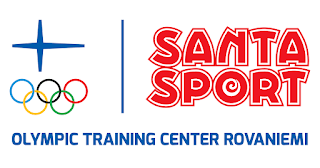
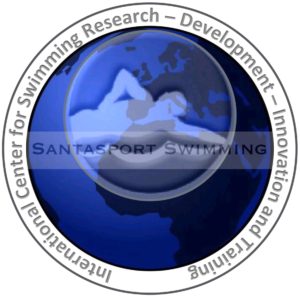
Olympic Training Center Rovaniemi is one of the six Olympic Training Center’s in Finland. Together with a diverse network of Universities, sports federations and associations, research institutes and other experts, we are able to offer a wide level of education in multiple fields of sports and well-being as well as in different sports.
Santasport Swimming is a growing International Research, Development and Innovation program for swimming. Our goal is that in the next four years we will run research on both learn to swim and high- performance swimming using our previous experience. Through our research work, we are hoping to offer new insights on swimming development.

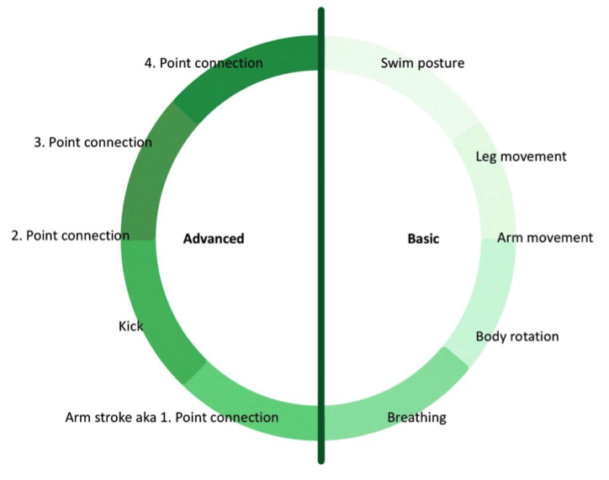
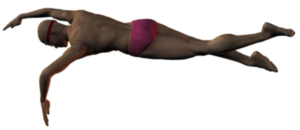
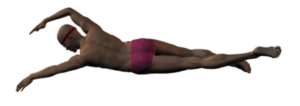
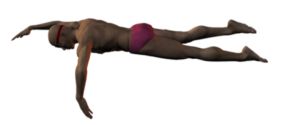
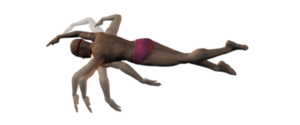
Awesome. Timing on freestyle is one of the trickiest things in swimming to fine-tune and one of my favorite things to nerd out about. There are a lot of variables to play with: the inherent asymmetry of the stroke, trying to sync up six kicks (or four… or two) with the arm pulls, the frequent interruption for the breath, then putting it all together and sharpening that skill until you can hold it at the end of a hard race… I love it.
I think Group C has the most potential in the 200 (and even down to the 100), where the body roll that happens immediately following hand entry powers a strong down kick, but it’s very possible that… Read more »
Thank you Sven for your comments. Interesting thoughts indeed. We will definitely continue working on this, and even though phase 2 is about measuring drag and propulsion in relation to these groups, we will continue to analyze any new coordination models if they appear during the measurements.
Group C swimmer looks very fluent in the water, and they can do a good 200 race. In our view, most of the swimmers who swim 400 and up, use some level of group a coordination. And even that they seem to use very individual style, when you break it down you can find the same fundamentals. Obviously we haven’t had a chance to analyze every swimmer, so there is a possibility… Read more »